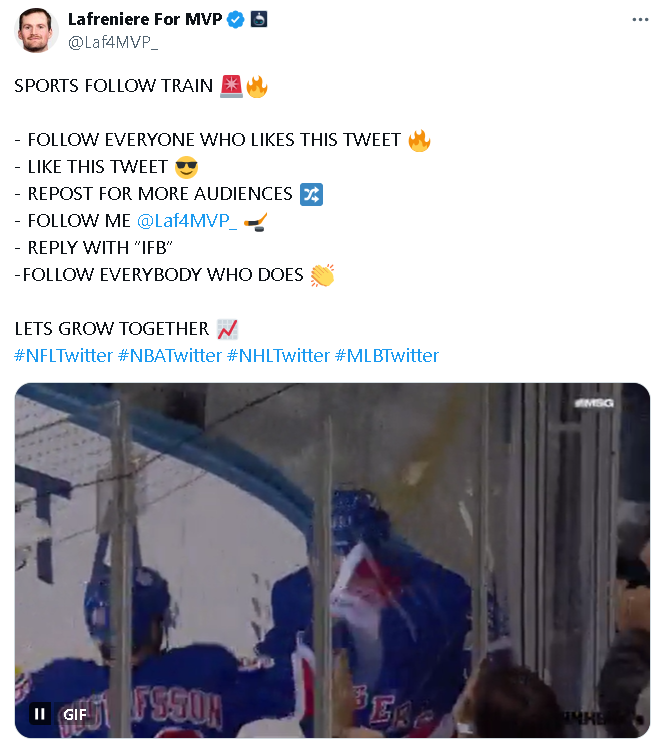A Twitter follow train is a coordinated effort among a group of users to follow each other simultaneously. The goal is to rapidly increase the number of followers for each participant.
Twitter follow trains rely on mutual follow-backs to grow everyone's follower counts. This cooperative approach can generate a lot of traction quickly, especially if many users engage with the original tweet.
How do Twitter follow trains work?
Typically, a person initiates a follow train on Twitter by tweeting something like, "Hop on the follow train! Follow everyone who retweets or comments, and they’ll follow back!" Participants then follow everyone involved, growing their follower count through a network effect.

Why do people use Twitter follow trains?
People join follow trains to increase their followers quickly without using paid ads or promotional tools. Here are a few reasons users find follow trains appealing:
- Fast follower growth: Twitter follow trains can result in a quick boost in follower numbers, providing an immediate sense of community.

- Enhanced engagement: Participants hope to engage with other like-minded people who enjoy Twitter’s social aspects.

- Visibility: A higher follower count may improve the perceived credibility of an account, making it more visible to potential followers outside the train.

While this method won’t guarantee long-term, organic followers, it can help users increase their reach, especially if they’re new to the platform.
Do Twitter follow trains really work?
Twitter follow trains can work, but they come with downsides. While your follower count may increase, not all followers gained this way will engage with your content long-term. Additionally:
- Quality vs. Quantity: Many users gained through follow trains may not align with your interests or goals, potentially resulting in a disengaged audience.

- Risk of fake followers: Follow trains sometimes attract bot accounts, which can make your follower count appear less genuine.

- Limited engagement: Users involved in follow trains may not interact with your posts after the initial follow, affecting your engagement rate.

If your goal is to build an audience of engaged followers interested in your content, organic growth strategies like creating valuable content or participating in meaningful discussions can be more effective.
Alternatives to Twitter follow trains for sustainable growth
If you’re aiming for long-term success on Twitter, consider supplementing or replacing follow trains with organic growth methods:
- Content strategy: Share valuable, relevant, and engaging content that resonates with your target audience. Consistent posting helps attract followers who appreciate your insights and expertise.

- Use hashtags wisely: Hashtags like #FollowFriday or topic-based ones can help improve discoverability without relying on follow trains.

- Leverage Twitter analytics: Understanding what content drives the most engagement with your existing followers can guide your growth strategy.

- Collaborate with other accounts: Partner with other accounts in your niche to cross-promote each other's content.

These organic methods, while slower, tend to attract a more engaged, authentic audience who is interested in your content.
Final thoughts on Twitter follow trains
Twitter follow trains can be an effective, if short-term, way to grow your follower count, especially when starting out.
However, for sustainable growth, consider combining follow trains with a solid content strategy and meaningful engagement with other users. This way, you’ll cultivate an audience that truly connects with your tweets and is likely to stick around.






